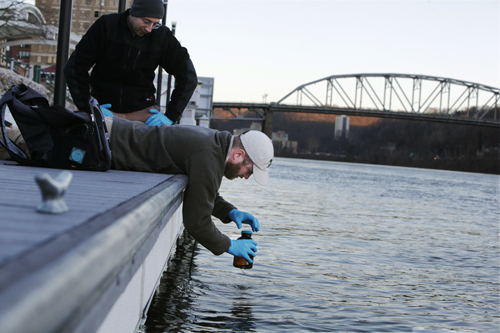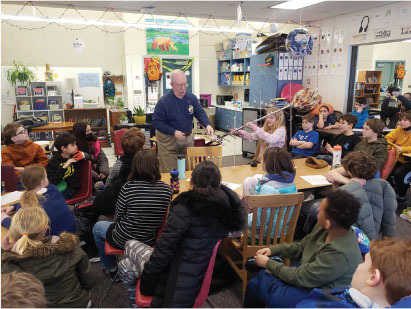March 2014
VARIABLES
Learning From Failure
The January 9 spill of approximately 10,000 gallons of a chemical used to clean coal into the Elk River, upstream of a water treatment plant near Charleston, West Virginia, contaminated the drinking water of about 300,000 West Virginia residents.
Now, research teams at three universities—the University of South Alabama, West Virginia University, and Virginia Tech—are studying different aspects of the spill. Funded by the National Science Foundation, the teams will examine the absorption of the chemical (MCHM) into and removal from plastic drinking water pipes, assess the extent of the contamination, and study MCHM’s physical and chemical behavior in the environment.
Andrew Whelton, an assistant professor in the University of South Alabama’s civil engineering department, says authorities have little or no information about the effect of MCHM on drinking water plumbing systems. “I have never witnessed such a grand scientific need to characterize household plumbing system water quality,” he adds.
The studies will provide an opportunity for undergraduate and graduate students to serve on the research teams. Whelton, who teaches an introductory environmental engineering course, plans to use the spill as a reference point for lessons on chemistry, water and wastewater treatment, and air quality.

RESEARCHERS FROM WEST VIRGINIA WATER RESEARCH INSTITUTE COLLECT SOIL AND WATER SAMPLES FROM THE ELK RIVER IN CHARLESTON, WEST VIRGINIA.
PHOTO CREDIT: WEST VIRGINIA UNIVERSITY


 Volunteering at NSPE is a great opportunity to grow your professional network and connect with other leaders in the field.
Volunteering at NSPE is a great opportunity to grow your professional network and connect with other leaders in the field. The National Society of Professional Engineers (NSPE) encourages you to explore the resources to cast your vote on election day:
The National Society of Professional Engineers (NSPE) encourages you to explore the resources to cast your vote on election day:
